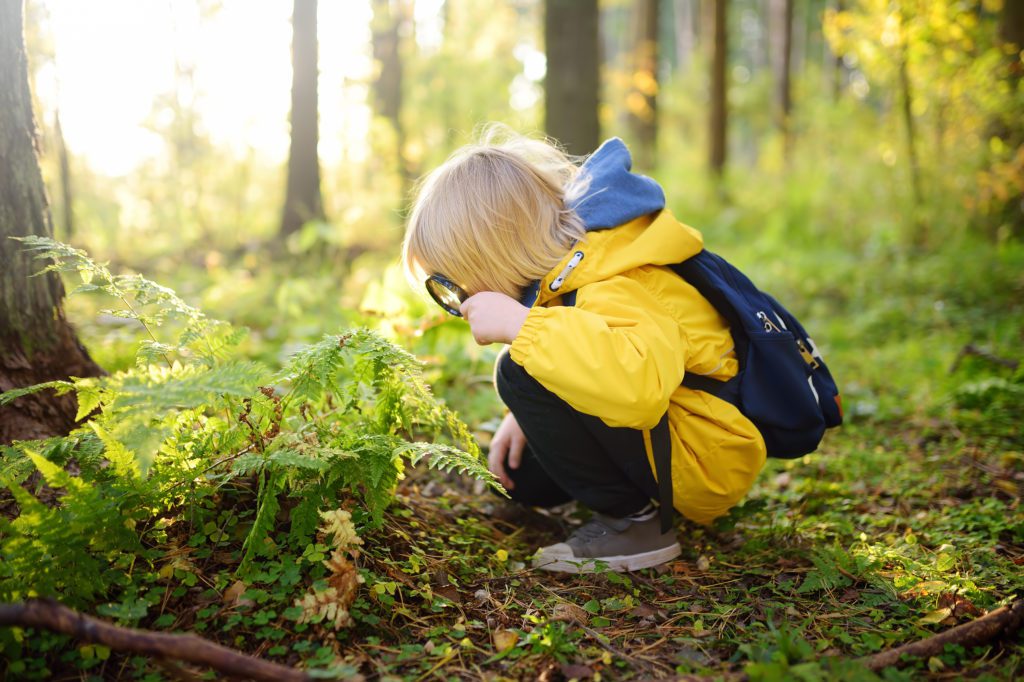Creating Summer Magic When There is No Summer Break


There is something magical about summertime. The days stretch longer; the smell of sunscreen fills the air; the nights are filled with fireflies, and if you listen, you might be able to hear the gentle strains of that song from the ‘70s: “School’s Out for Summer.” However, for many teachers and students, school isn’t out. Year-round programs care for and educate millions of children for all 52 weeks of the year. Across the country, alarm clocks still interrupt sweet slumber as families head to work and children and teachers head back to classrooms.
Though these year-long programs don’t have a couple of months off to refresh and rest, that doesn’t mean the magic of summer isn’t possible. Of course, what feels like magic to children and families doesn’t just happen; it is the result of the hard work and passion you dedicate to taking advantage of the unique sights, sounds, smells, and events of this special time of year. With planning and creativity, teachers can create a sense of wonder and fun for children as well as themselves. Let’s look at some ways to make summer feel different from the rest of the school year.
Take School Outside
If you have the space, consider recreating some of your classroom interest areas outside.
- Loose parts such as boards, boxes, and milk crates can make an excellent outside Block area.
- Use tape or clothespins to attach paper to a fence, and you have an outside easel.
- Have children help you build a water maze with PVC pipes, tubes, and large plastic bottles as part of a Discovery area.
- Ribbons and yarn can be woven through fencing for a fun art/sensory experience that grows as the summer progresses.
- Invite families to send in old baking pans and kitchen utensils. Have these in bins or attach them to wood paneling to make an outside Music and Movement area.
- Start collections of natural items that children can investigate, manipulate, sort, and classify.
- Build movement stations and obstacle courses that grow and change over time.
- Many of the components of your daily routine—read-alouds, large group, choice time, small group, and lunch—take on a different significance or feeling when they happen outside.
These are just some ideas to spark your imagination. Challenge yourself to think about the goals of each of your interest areas and how you might meet those goals in your outside space. Work with other teachers to plan and create your outside summer classroom.
Remember, also, to consider your and the children’s safety and comfort when spending time outdoors, especially in the summer. Use sunscreen and take advantage of shady spots as children engage in activities. Be sure to have plenty of water available for you and the children.
Revisit Previous Studies
There are some studies in The Creative Curriculum that naturally lend themselves to the summer months. Because so much exploration can happen outside, Gardening and Water are great examples of possible summer studies.
It could also be fun to revisit some studies you previously completed to see if there are new questions to investigate.
- What do the children notice about the clothing people wear in the summer?
- What insects do children see while outside? What are those insects doing?
- Are there special things that happen to buildings in the summer?
- How do trees look different in the summer than they did earlier in the year?
As you ask these questions, you are helping children connect new learning with previous knowledge. If children become reengaged in a topic, it might lead to a whole new chapter of a previous study.
Sprinkle in Fun
In addition to considering how you can make summer learning special and engaging, be equally intentional about planning special activities that add a touch of magical summer fun.
- Did you know that some ice cream trucks will come to you? On a hot summer day, nothing is as refreshing as a cold popsicle or ice cream treat.
- Since 2009, International Mud Day is celebrated on June 29. Ask families to send in some old clothes and prepare to get messy in a mud extravaganza. A quick rinse in the hose before heading back inside caps the experience off nicely.
- Speaking of hoses, water is a staple of summer fun. Look for ways that children can cool off and play in sprinklers, splash in puddles, and just experience the joy of water.
Special visitors, celebrations, and events can add an extra element of fun and learning to the children’s summer.
Just because a program is year-round, summer doesn’t have to be more of the same. Instead, you are the creator of the magic in the experiences you facilitate and the environments you design. Then, when those “what I did this summer” essays are written during those first few weeks of the school year, you can bet that, along with the mentions of family cookouts and thrilling fireworks displays, children will fondly remember the fun you had together.

Build a Foundation for School Readiness
Create meaningful learning experiences for the youngest learners with The Creative Curriculum.
The Creative Curriculum